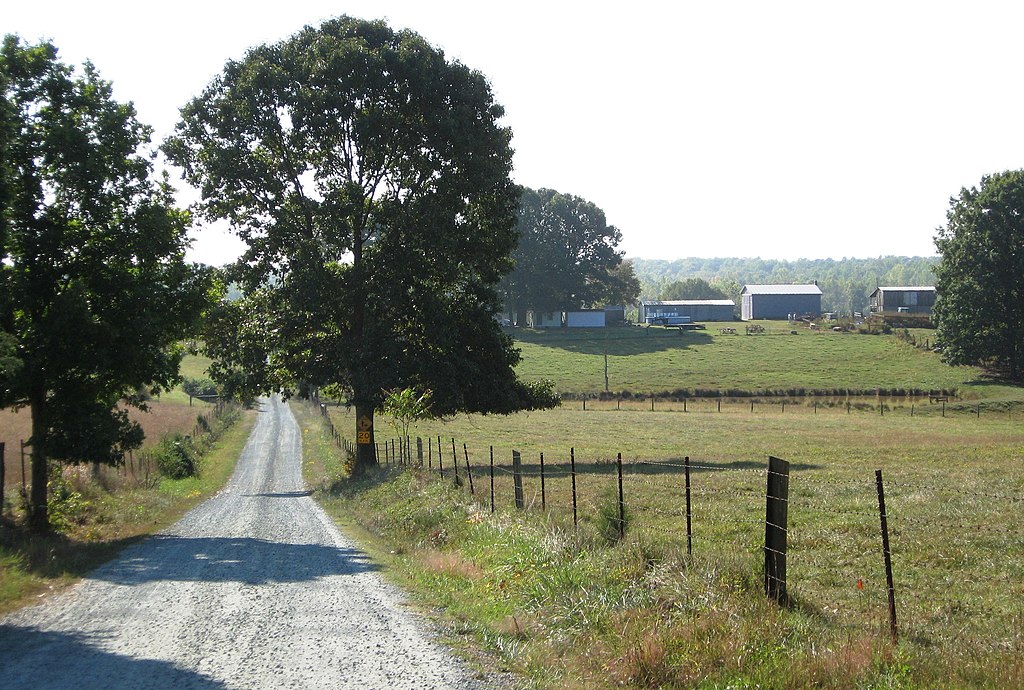Naturalists Notebook – Switchgrass
You’ve probably driven by fields full of switch grass a hundred times and never known it.
Varieties of the warm season grass – Panicum virgatum – can be found all over the Southeast and the Midwest. Switch grass looks humble enough in the spring, but by autumn it can be six to ten feet tall. Early pioneers sometimes got lost in it as they rode west across the prairie. Later, it was widely used for erosion control and grazing.
In recent years, switch grass has been envisioned as part of the effort to break US dependence on foreign oil. As a “new” energy crop, good old switch grass attracted lots of political ballyhoo, and even a mention in a presidential speech.
But beyond the hype, there is serious science and a strong potential for green jobs and greener fuels in the Appalachian region.
Deep roots mean drought resistance
Millions of acres of switch grass once stretched from the Southeastern coasts to Canada and the eastern front of the Rocky Mountains in the tall grass prairie. It was part of an ecosystem that included other tall grass prairie plants like bluestem and eastern gamagrass along with forbs like sunflowers, prairie clover and prairie cone flower. As the tall grass prairie gave way to corn and soybeans, switch grass and related species came to be found more in protected areas – along fence lines, in old cemeteries and church yards, and alongside streams.
With roots that can grow to a depth of 10 feet in good soil, switch grass has extraordinary drought resistant. At left, Dr. Blake Brown, director of the University of Tennessee Research and Education Center at Milan, stands in a field of switch grass during the 2007 drought. At harvest it was more than 10 feet tall. Switch grass does not need much fertilizer to produce yields as high as 15 tons per acre per year. It is usually harvested with ordinary hay bines.
Unlike hay, switch grass for biofuels is usually harvested only at the end of the season, when nutrients have returned to the roots and the stalks consist mostly of dry cellulose. This is intended to avoid the energy cost of drying out the grass for processing, but hunting and conservation organizations consider this a bonus. Because there is no need for regular cutting, switch grass cultivation enhances populations of ground nesting birds like wild turkeys.
Cellulosic biomass for fuel
Switch grass is mostly cellulose, and that’s the main component of the cell walls of all plants. We’re familiar with cellulose in the form of cotton, or paper, or cardboard. When it is broken down, cellulose becomes glucose, a type of sugar, which is easily fermented or turned into all kinds of fuels or chemicals.
The idea of using cellulosic biomass for fuel, as opposed to converting food crops like corn to ethanol, was considered as early as 1921 when Yale university chemistry professor Harold Hibbert warned: “This country will be dependent entirely upon outside sources for a supply of liquid fuels… paying out vast sums yearly in order to obtain supplies of crude oil from Mexico, Russia and Persia.” But chemists might be able to solve the problem, Hibbert said, by converting cellulose waste from farm crops, timber operations and seaweed into ethanol.
Cellulosic biofuels experiments were proposed many times since Hibbert’s prophetic statement. However, biofuels processes were expensive and could not compete with low-priced gasoline.
In World War II, chemists studying “jungle rot” from the Pacific theater found something new that could replace the expensive old biofuels processes. It was a variety of fungus that produced an enzyme that could help break cellulose down into glucose more easily. One of these chemists, Leo Spano, was still working on the T. Reese enzyme when the 1973 oil embargo hit. He predicted in a Congressional hearing the next year that the small discovery would change the world.
Since then, research funding has been slow in coming, but will exceed $100 million per year for the first time in 2009 with the passage of the farm bill this May. Also in the recent farm bill was a tax credit of $1.01 per gallon for cellulosic ethanol and loan guarantees for producers.
How much acreage for how much fuel?
About 30 percent of US oil consumption, or around 100 billion gallons, could be replaced by switch grass and other cellulosic biofuels, according to a 2005 assessment by USDA and the Department of Energy. This would not cut into food production, and in fact, could take place while food supplies were growing. The report assumed that 55 million acres of now idle cropland and conservation reserve lands could be used to produce about a billion dry tons of cellulose per year. This “can be accomplished with relatively modest changes in land use and agricultural and forestry practices,” the report said.
Cellulose ethanol would be an improvement over corn ethanol in terms of yield. Where an acre of corn might be processed into 440 gallons of ethanol, an acre of switch grass might produce enough for 1,500 gallons. Cellulosic biofuels also have a better energy balance (lower carbon footprint) than corn ethanol.
TN & NC bet on switch grass
Major biofuels research and development initiatives have been launched in North Carolina and Tennessee with a strong focus on switch grass.
The University of Tennessee effort is expected to involve up to 8,000 acres of switch grass plantings with cooperating farmers.
Related Articles
Latest News
More Stories

Leave a comment
Your email address will not be published. Required fields are marked *





Leave a Comment